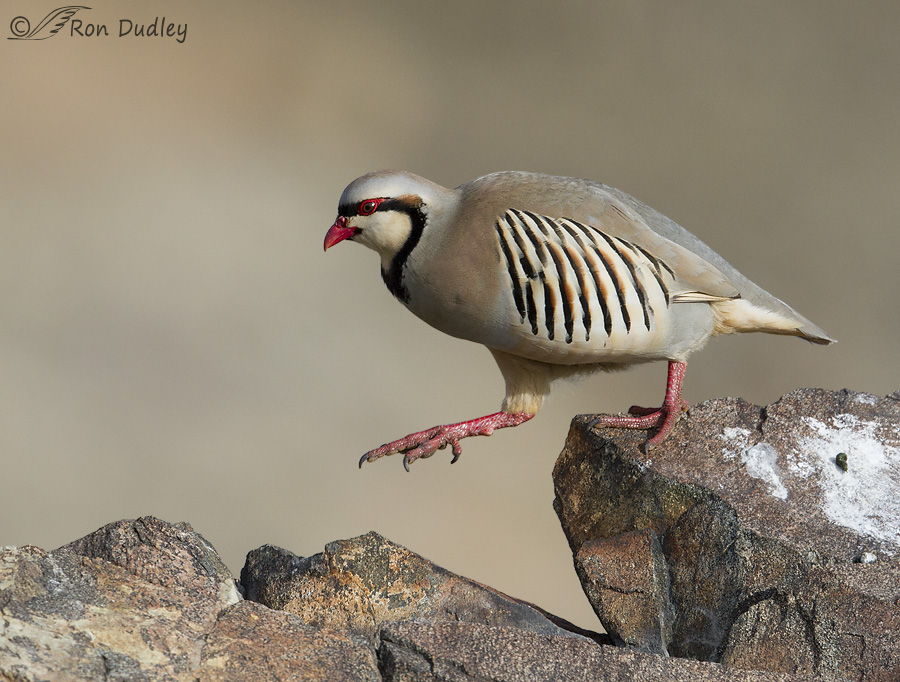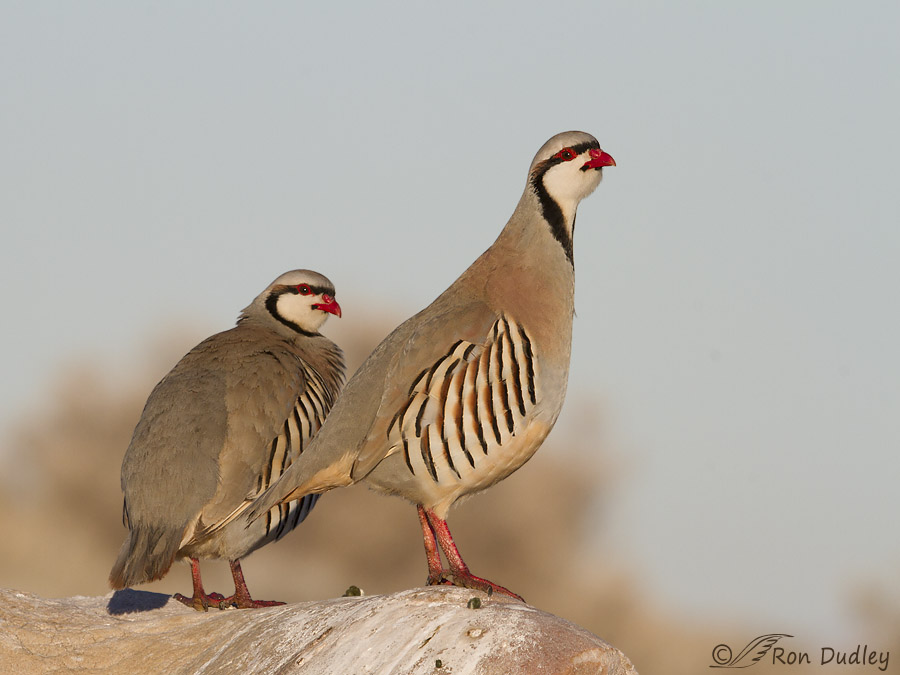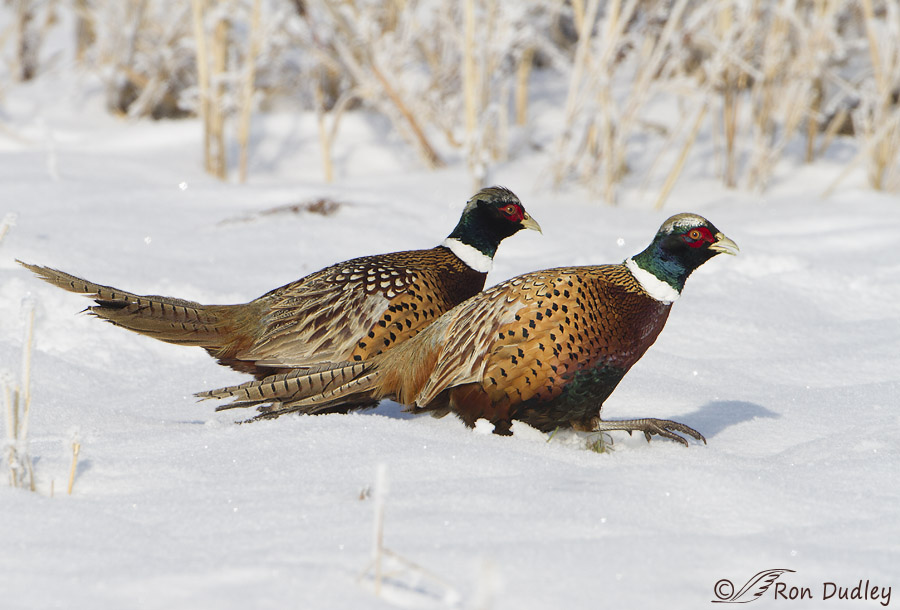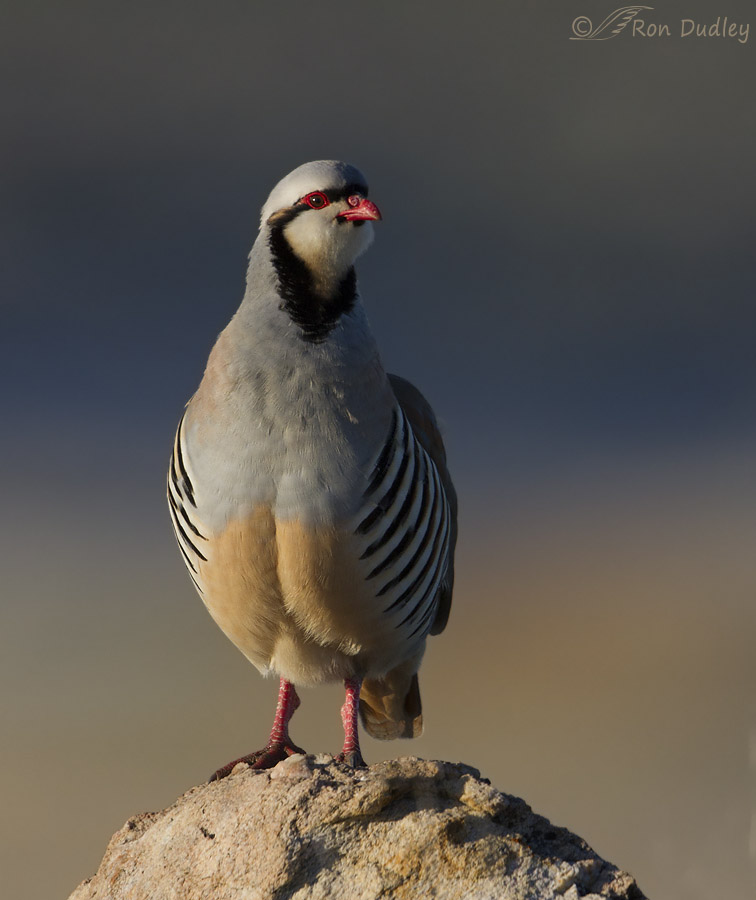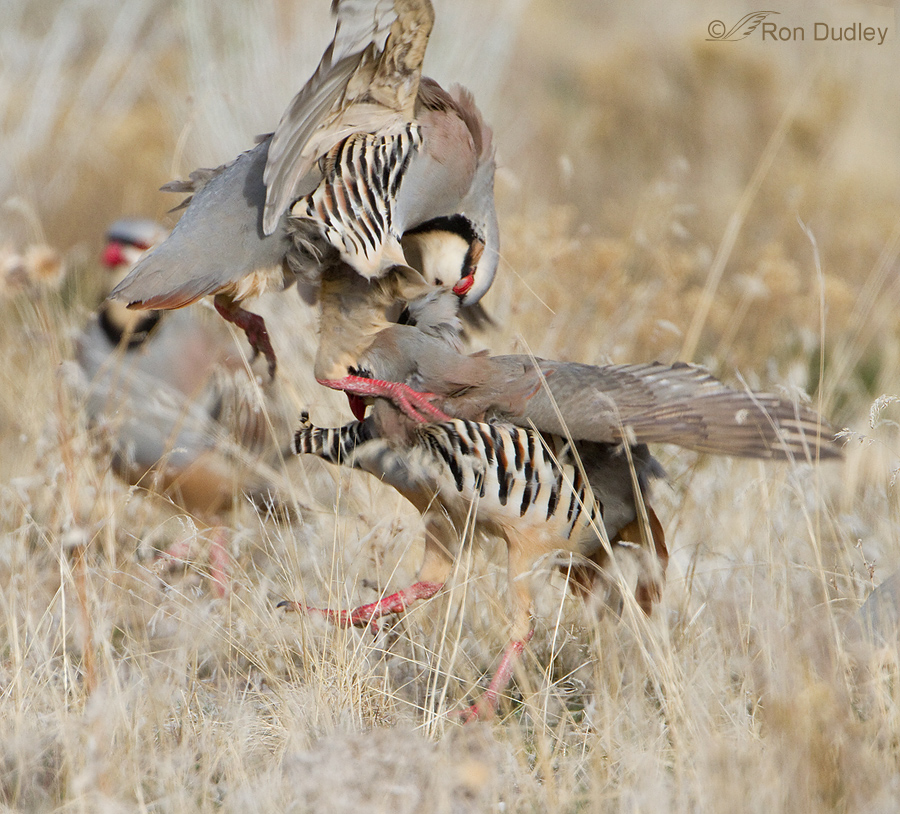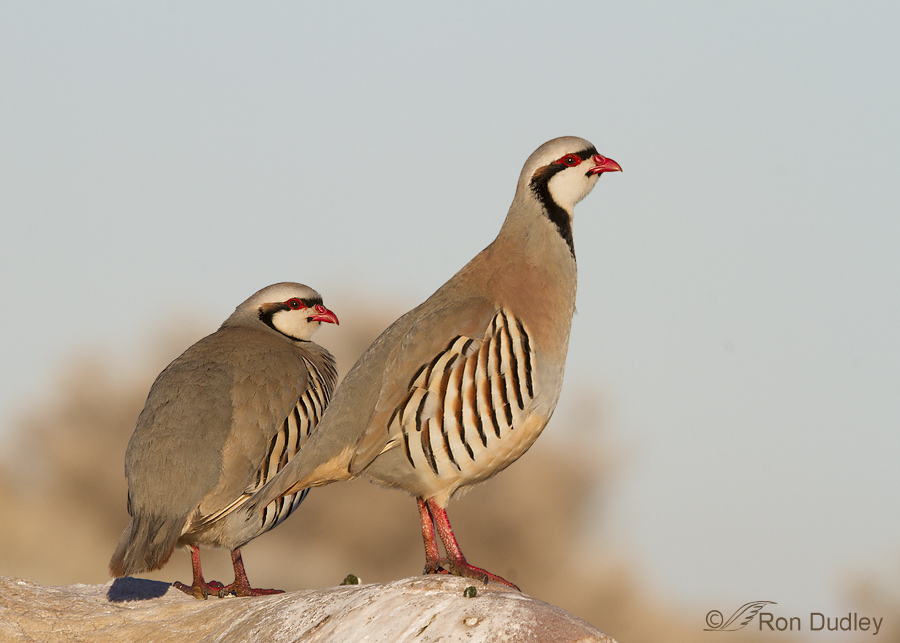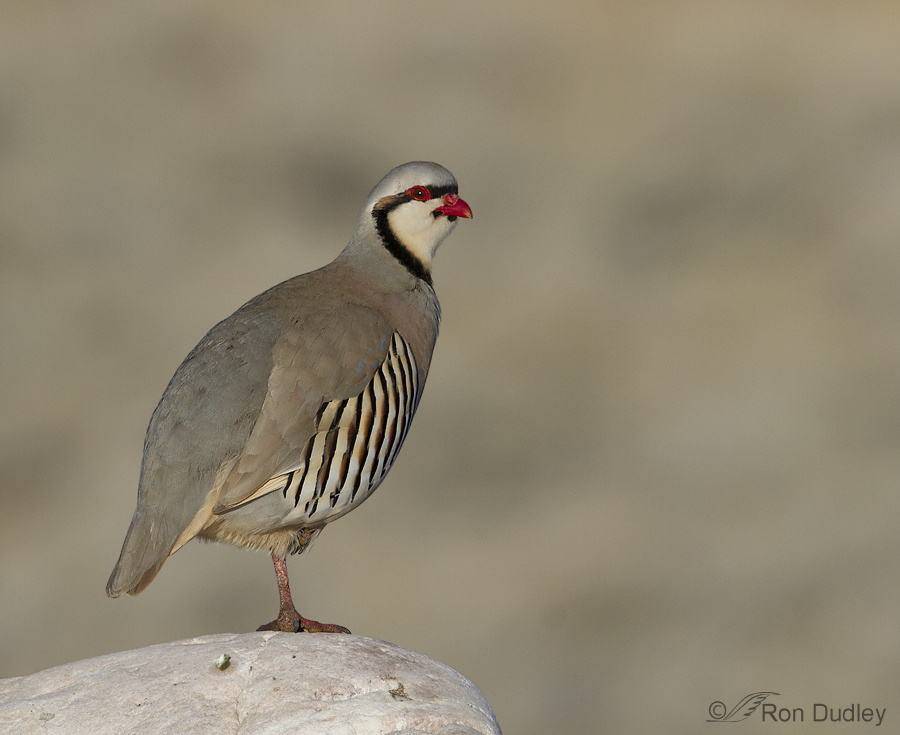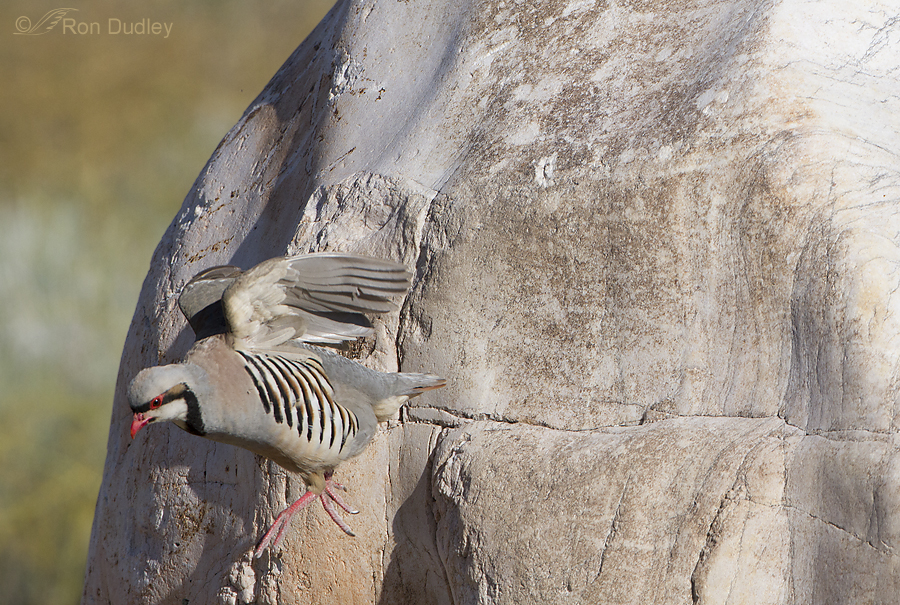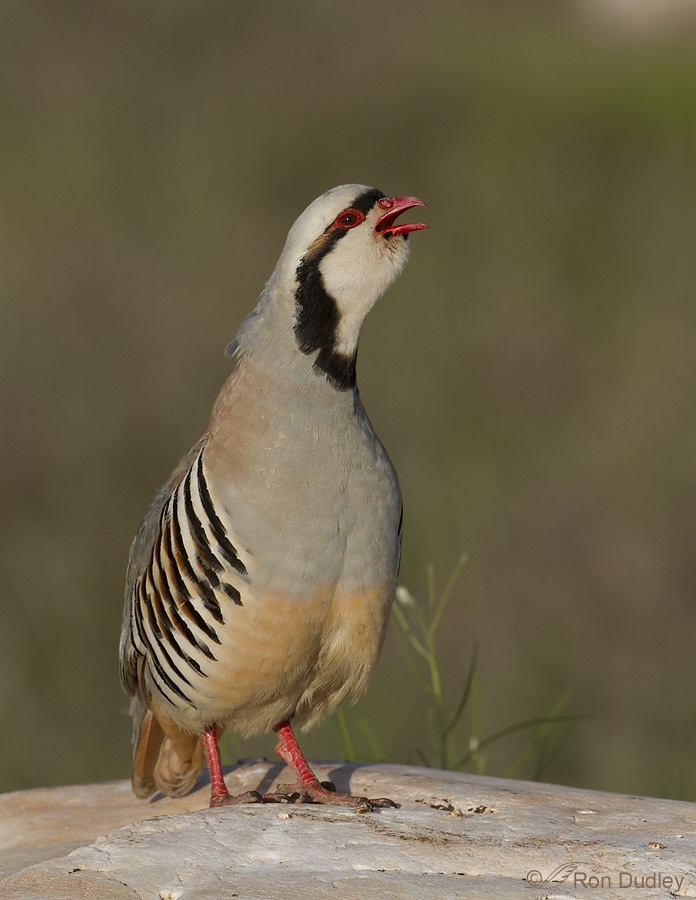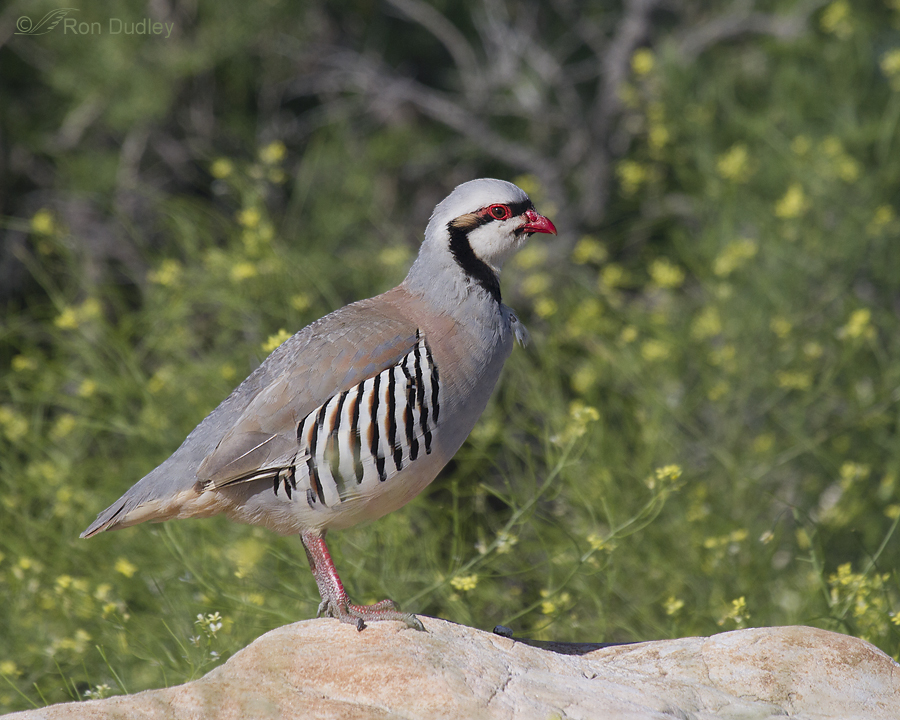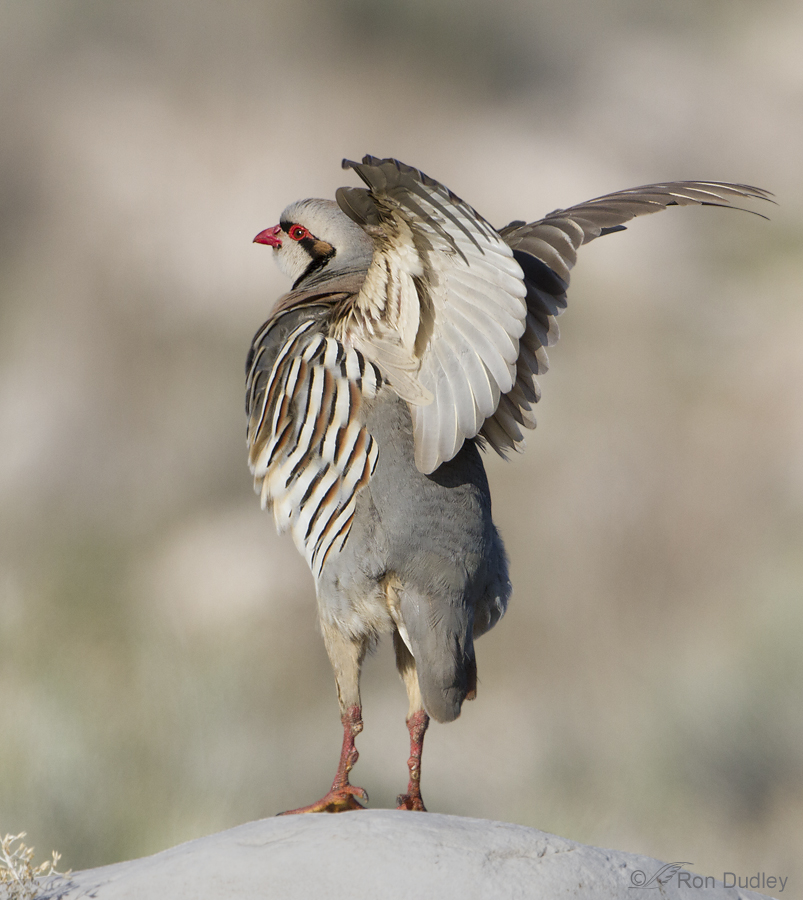Tag: chukar
Chukars – A Pair
Birds In Snow
Sidelit Chukar
Chukars – Fighting Takes Its Toll
Chukars – A Probable Mated Pair
Finally! – Another Cooperative Chukar
Chukar Calling On One Foot

Chukars continue to be one of my preferred subjects during the winter and spring due to their distinctive and colorful plumage and their often comical behavior. They are abundant on Antelope Island and even somewhat approachable there – at least in comparison to their skittish and wily ways elsewhere (hunters consider them to be among the most challenging of upland game species).
Chukar Free Fall
Plumage-challenged Chukar
Chukar Served With Black Mustard
Chukar – Wing Stretch On Tippytoes
Chukars Descending
I’ve mentioned before how very reluctant Chukars are to fly. They much prefer to scurry away through the grasses whenever they feel insecure or threatened.
And that reluctance also applies when they’re ready to leave an elevated perch. They’ll nearly always find a way to scramble down a big rock rather than fly from it like most other birds would. That tendency was demonstrated to me twice yesterday morning on Antelope Island.
Chukar Contrasts
Early last Sunday morning was a good time for Chukars on Antelope Island. It was too early for the weekend crowds who were mostly still home snoozing away, the light was great and the Chukars cooperative.
A Chukar Sentry Abandons Its Post
I’ve never been able to get a Chukar in flight or taking off, largely because they’re so hesitant to fly. Even when they’re perched on an elevated rock they usually just hop to the ground when they’re ready to leave. And when they do fly, typical of most upland game birds, they fly very fast, low to the ground and away from you which makes for an almost impossible target. But I got one yesterday morning, taking off. 1/5000, f/5.6, ISO 500, 100-400 @260mm, natural light This bird was acting as a sentry (also called a sentinel) for a small group of other Chukars nearby. It’s observation perch of choice was a sign post that was high enough that it had to actually fly when it decided to leave. I was too close to this bird for my 500mm lens so I quickly grabbed my 100-400 zoom lens and when it looked like it might be thinking of taking off I zoomed back far enough to give the Chukar enough room to fly into. I had plenty of light for a shutter speed fast enough to freeze the wings of even this buzz-saw flier (those relatively short wings on such a chunky bird really have to churn to get it airborne) and was lucky enough to catch the wings in a position I like. A more appealing perch would have been nice but I’m pleased with the way most everything else turned out. Ron


